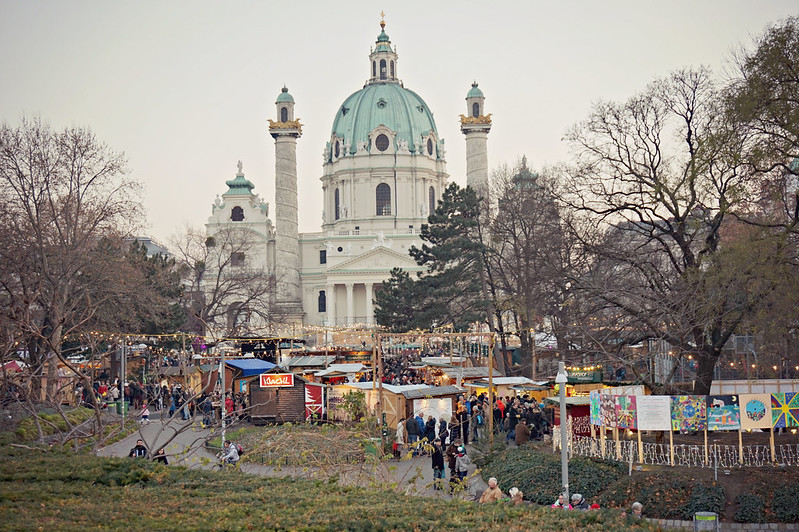
Chegámos á Karlsplatz depois de visitar o Palácio de Verão da familia real, já estava um pouco cansada mas a animação do mercado de Natal com a Karlskirche como pano de fundo fez ganhar um novo fôlego. É uma das maiores da cidade e á sua volta para além da igreja podemos encontrar uma universidade, o Musikverein (uma sala de concertos) e pelo Künstlerhaus, assim como dos pavilhões desenhados por Otto Wagner.
We reached the Karlsplatz after visiting the Summer Palace of the Royal family, I was already a little tired but the animation of the Christmas market with the Karlskirche as a backdrop made me regain my strenght. It is one of the city's largest squares and around it, in addition to the church we can find a university, the Musikverein (concert hall) and the Künstlerhaus, we can also see the pavilions designed by Otto Wagner.
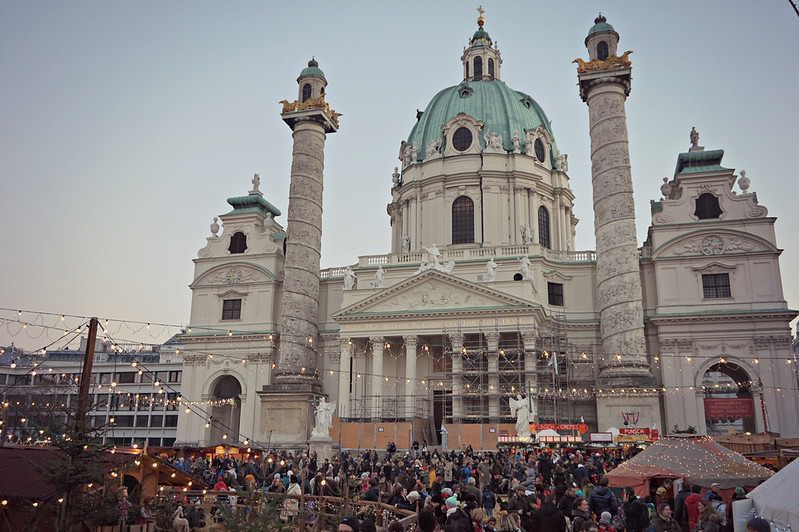

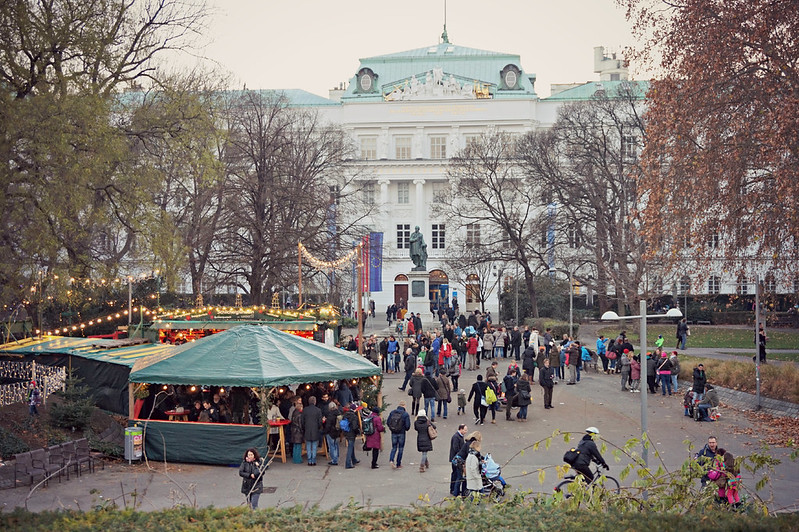
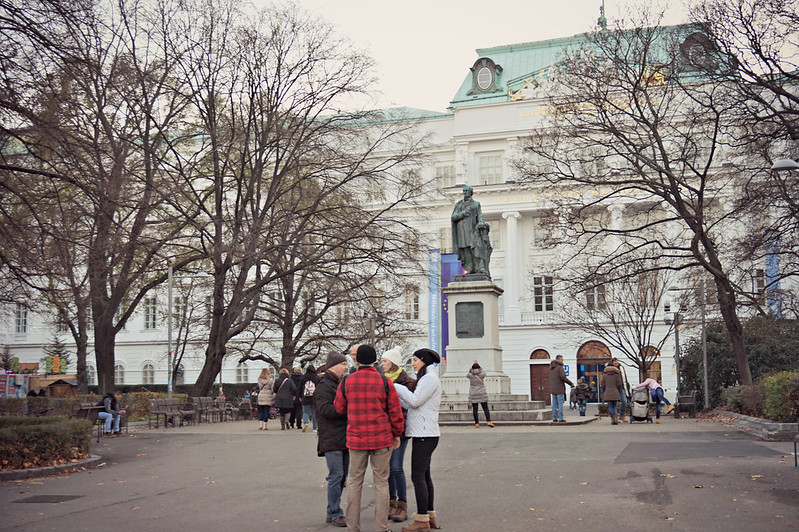
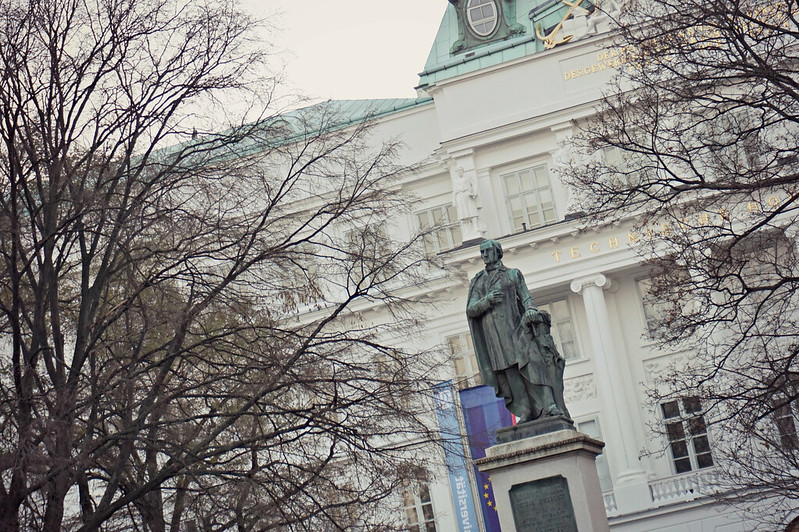
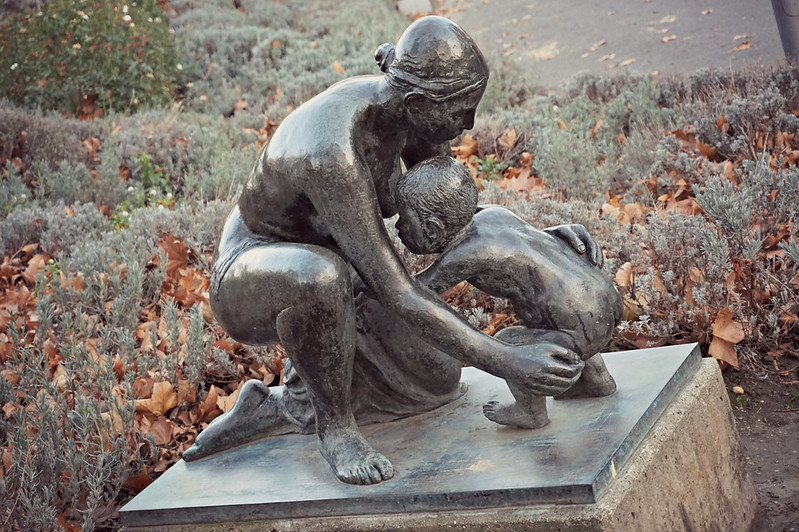
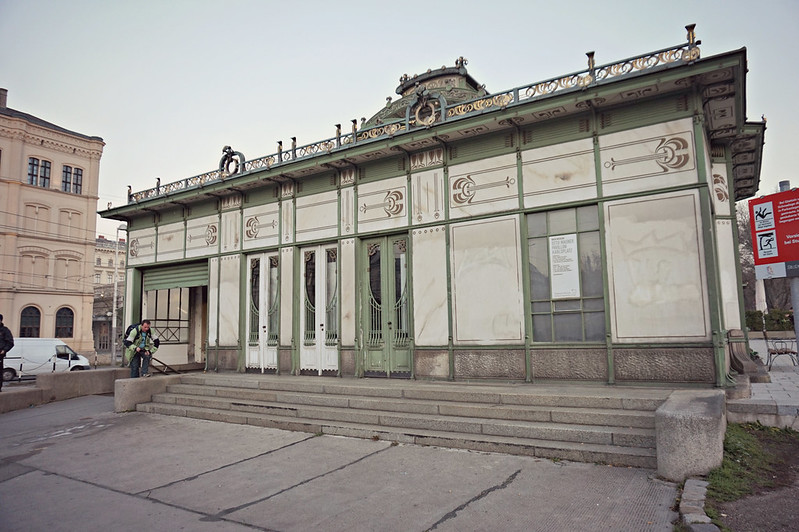
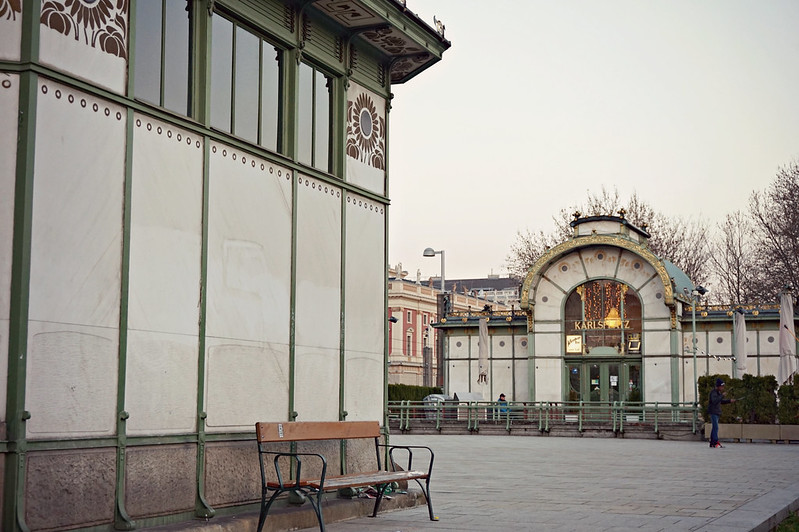
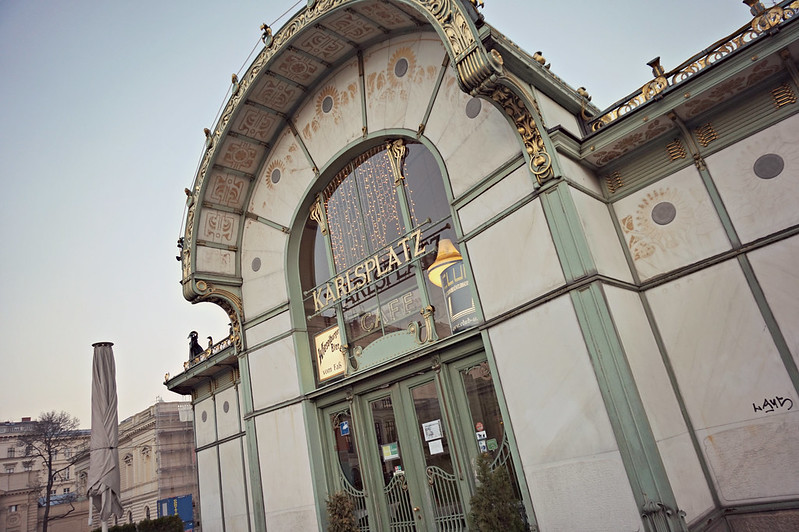
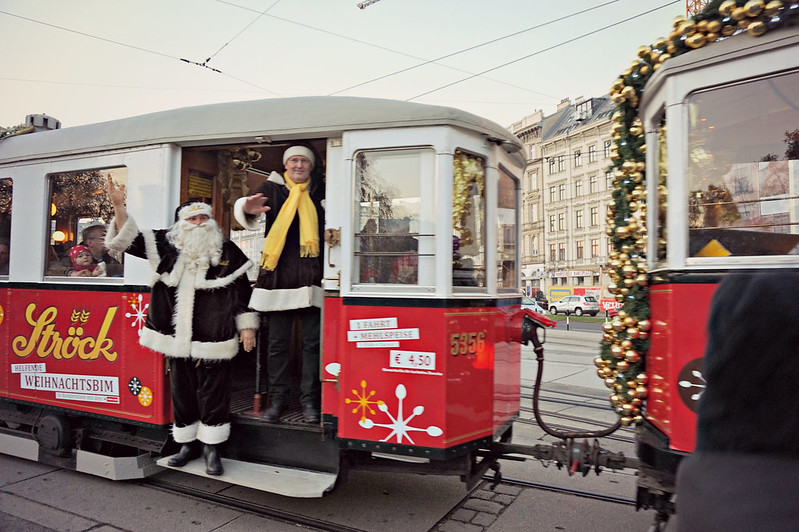
We reached the Karlsplatz after visiting the Summer Palace of the Royal family, I was already a little tired but the animation of the Christmas market with the Karlskirche as a backdrop made me regain my strenght. It is one of the city's largest squares and around it, in addition to the church we can find a university, the Musikverein (concert hall) and the Künstlerhaus, we can also see the pavilions designed by Otto Wagner.

Esses pavilhões são um excelente exemplo do Art Noveau e eram originalmente estações de comboio que nos anos oitenta entraram em desuso e foram deslocados para a zona onde estão agora. Num deles está um café mas quando por lá passámos parecia que estava fechado. O edificio que marca a praça é sem dúvida a Karlskirche dedicada a Carlos Borromeu que foi o primeiro a fundar os seminários que servem ainda hoje para formar padres. Construída no século XVIII durante o reinado de Carlos VI (pai de Maria Teresa) com um estilo barroco onde se destaca a cúpula e as duas colunas triunfais inspiradas na Coluna de Trajano em Roma.
Também de esta praça vimos sair os eléctricos de Natal um deles patrocinado pelas famosas bolachas wafer de Viena, as Manner.
These pavilions are an excellent example of Art Nouveau and were originally train stations, in the eighties went into disuse and were moved to the area where they are now. In one there is a cafe but when we went there it looked like it was closed. The building that marks the square is undoubtedly the Karlskirche dedicated to Charles Borromeo who was the first to found seminaries that serve today to train priests. Built in the eighteenth century during the reign of Charles VI (father of Maria Theresa) with a baroque style which includes the dome and the two triumphal columns inspired by Trajan's Column in Rome.
Also in this square we saw out electrical Christmas one of them sponsored by the famous wafer cookies Vienna, the Manner.
These pavilions are an excellent example of Art Nouveau and were originally train stations, in the eighties went into disuse and were moved to the area where they are now. In one there is a cafe but when we went there it looked like it was closed. The building that marks the square is undoubtedly the Karlskirche dedicated to Charles Borromeo who was the first to found seminaries that serve today to train priests. Built in the eighteenth century during the reign of Charles VI (father of Maria Theresa) with a baroque style which includes the dome and the two triumphal columns inspired by Trajan's Column in Rome.
Also in this square we saw out electrical Christmas one of them sponsored by the famous wafer cookies Vienna, the Manner.









Our guide of

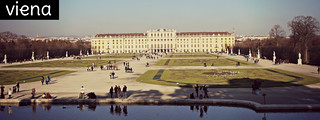
Sem comentários:
Enviar um comentário